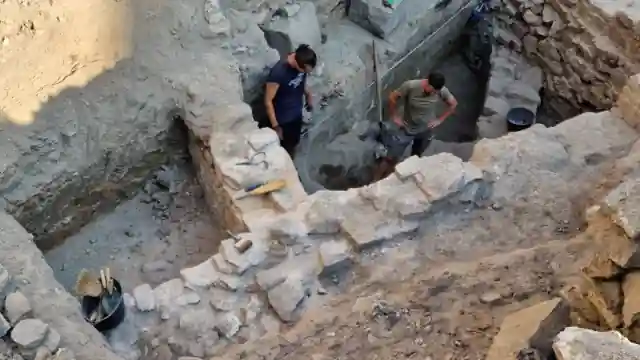
Plovdiv, Bulgaria – Archaeologists from the Regional Archaeological Museum in Plovdiv have unearthed a treasure trove of historical artifacts during rescue excavations near the base of the Old Town.
The site, within the historically significant Philipopol-Trimontium-Plovdiv zone adjacent to the Eastern Gate of Philippopolis, has yielded over 500 coins spanning various historical periods, alongside gold ingots likely intended for jewelry production.
The head of the archaeological research, Desislava Davidova, revealed that the excavation site is believed to have been a bustling hub for commercial and craft-related activities during the Roman era and earlier antiquity.
Despite extensive excavations, no evidence of residential buildings has been discovered, underscoring the area’s significance as a center for trade and craftsmanship.
“Most of the coins we have uncovered are bronze, which suggests a long history of habitation stretching back over 2,500 years,” Davidova explained.
She added that while the majority of the coins are bronze, some might be silver but are currently difficult to identify due to heavy patina. These coins are now undergoing meticulous restoration to reveal their true nature and historical context.
The discovery of the gold ingot has particularly intrigued the archaeological team. Found in a secondary excavation pit within the multi-layered site, the ingot is yet to be assayed.
Preliminary assessments suggest it was intended for decorative purposes, likely to be fashioned into jewelry rather than used for coin production. This find adds a fascinating dimension to the understanding of the site’s economic and cultural activities.
In addition to the coins and gold ingot, the excavation has also uncovered a significant amount of ceramic material from various eras. These artifacts provide further insight into the daily lives and practices of the inhabitants who once thrived in this ancient city.
The Philipopol-Trimontium-Plovdiv zone is one of Bulgaria’s most historically rich areas, with a heritage that dates back to Thracian, Greek, and Roman civilizations.
The Eastern Gate of Philippopolis, near which these latest discoveries were made, is a testament to the city’s importance as a regional hub throughout antiquity.
The ongoing excavations continue to shed light on the diverse historical narratives that have shaped Plovdiv.
Davidova and her team are committed to preserving and studying the artifacts to enhance the understanding of Plovdiv’s rich historical tapestry.
The coins, once fully restored, will provide valuable insights into the economic history of the region, including trade routes, economic exchanges, and the everyday lives of its past inhabitants.
The findings have sparked excitement among historians and archaeologists, who anticipate that the ongoing restoration and study of these artifacts will yield significant contributions to the understanding of ancient economies and craftsmanship.
The gold ingot, in particular, promises to offer a unique glimpse into the artisanal skills and aesthetic values of the period.
As the Regional Archaeological Museum in Plovdiv continues its work, these discoveries will undoubtedly become an integral part of Bulgaria’s rich cultural heritage, attracting scholars and history enthusiasts from around the world.
The excavations serve as a reminder of the enduring legacy of ancient civilizations and the continuous journey of uncovering humanity’s past.